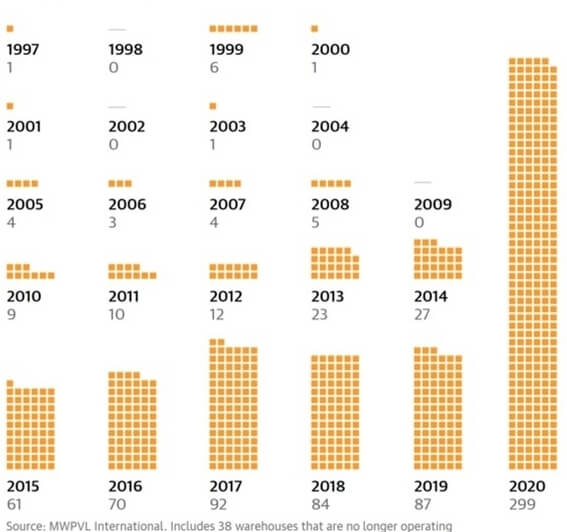1) Availability (or lack thereof)
System fill is one of the most comprehensive measures of whether parts are delivered on time to dealers. By June of 2021, the industry was down to 90%; over 7 percentage points below the historical entitlement level. Throughout Carlisle’s thirty years of benchmarking data, this is the lowest fill ever. Parts availability figures look the same for other segments such as heavy equipment and commercial truck. The impacts of this historically low fill rate are felt by our clients and their customers every day. The drivers are an unprecedented combination of spiking demand and bottlenecks at nearly every step of the supply chain. Harry Hollenberg, Managing Director of Carlisle and leader of Carlisle’s Insights Portfolio, and I previously analyzed these challenges at length in a prior post.
10 Years of Auto Industry System Fill
| Year | System Fill |
|---|---|
| 2011 | 97% |
| 2012 | 98% |
| 2013 | 98% |
| 2014 | 97% |
| 2015 | 97% |
| 2016 | 97% |
| 2017 | 97% |
| 2018 | 97% |
| 2019 | 96% |
| 2020 | 96% |
| June 2021 | 90% |
So what? Above all else, availability is integral to the aftersales experiences of OEMs, dealers, and customers. If you have low fill rates, it really doesn’t matter how good you are in areas such as AI enabled diagnostics, fully integrated products, or a seamless digital customer experience. Without adequate availability, these features matter little to customers.
What does this mean for the future? We are in a deep availability hole and digging out will take longer than we expect. The problems will not be solved in 2022. If we are optimistic, maybe we will turn things around in 2023. The scale and scope of the issue make this an entirely unprecedented situation, and there is no single solution. Rather, solutions come in the form of a hundred small actions across the supply chain. But even then, the problem persists because everyone is competing for the same constrained people, technology, and assets. I recommend you under promise to your customers and bosses on availability in 2022. You are not yet in control.
2) Resources (slim pickings)
New Amazon Warehouses

This graphic shows the number of new warehouses Amazon added in the US, by year. That’s right, 299 new warehouses in 2020 alone. What about 2021? The full number is not in yet, but according to the Wall Street Journal, the tech giant opened 100 U.S. facilities in just September 2021 and hired 150,000 warehouse workers ahead of the holidays.
So what? Even with competition for resources (primarily space and people) heating up, Amazon continues to build more and grow, acquiring hundreds of thousands of workers in the process. Where are they getting the people? Well, a good chunk of them are likely your old employees that left your industry and your facilities for the brand recognition and improved pay of Amazon. The shocking thing is that Amazon prides itself on their employee turnover – they recognize that warehouse workers get burnt out 2-3 years in and even encourage their “seasoned” employees to leave. Why? They realize that their labor pool can still grow given the desirability of their starting wages, bonuses, and overall compensation packages. In effect, they accept a consistent level of departures and maintain employment levels with new recruits. It’s no wonder you and your suppliers and carriers are having trouble with staffing. Are you sure you are paying competitive wages and encouraging your partners to do the same?
What does this mean for the future? I recommend you reconsider the wages you and your partners are offering. Ask yourself how Amazon continues to attract new talent while your warehouses are struggling to find full-time labor. The work is extremely similar, so something must be different with wages or benefits. If you and your partners are wary of investing in your people due to its effect on your profits…just imagine what Amazon can offer to your customers with their nearly 1,000 warehouses, cutting-edge technology, and a perennially growing supply of dedicated employees. Be courageous and fight for investment dollars to keep your aftersales business competitive and afloat. Benchmark Amazon wages in your region so you have a sense what the competition is paying. Invest in your people, so that you can get to the service levels that Amazon has. Invest now for a future of retained, happy customers who will offset any short-term profit losses.
3) Channels Evolution (moving to direct-to-consumer)
Disrupter Valuation Premium
| Carvana | AutoNation | |
|---|---|---|
| Market Cap (12/15/21) | $41.6B | $7.6B |
| Used Cars Sold (Q3 ’21) | 110,000 | 135,000 |
| Revenue (Q3 ’21) | $3.5B | $6.4B |
| Year Founded | 2012 | 1991 |
AutoNation is the largest dealer group in the US. It is diverse, respected, and evolving. Carvana is the technology-enabled used car retailer that offers radical customer policies, such as vehicle returns. Let’s assume for a moment that capital markets are efficient at finding future winners. Carvana’s market capitalization is over five times greater than AutoNation’s, with revenues half as large. There are many reasons behind this valuation disparity: digital transacting, pooled inventory, selling direct, scale of retail points, cost of service, specialization, etc.
So what? This is not an auto only story. This case study merits a reconsideration of the relationships, roles, and economics between all OEMs and their channel partners, irrespective of industry. I understand that some have 100+ year histories with their dealers or distributors as well as the natural constraints of state franchise laws. Nevertheless, new entrants are introducing previously unforeseen competitive threats and scrapping these age-old conventions.
What does this mean for the future? Unfortunately, I don’t know. Nobody knows. There are too many “what ifs”. One big question is the extent to which your B2B and B2C customers are willing to interact digitally versus in-person. Of course, there is no “one-size fits all” answer; your customers’ needs vary by segment. Some companies already sell direct to their biggest, most sophisticated customers. What are the economics of delivering parts and service support direct vs. through a channel partner (e.g., Tesla is very successful in selling direct today, but is this sustainable as their car parc grows and ages)? Will new market entrants compel change? What legal and regulatory developments are in store?
What I do know is that accepting the status quo with your dealers and distributors is fraught with risk. You need strategies that contemplate alternative channel partners and sell direct scenarios. You need to understand the levers you can pull to influence these scenarios and the impacts of different industry stakeholder actions. This framework moves you from passively watching to actively managing your channel strategy for the future.
In conclusion…
The aftersales environment of 2022 will be defined by our ability to identify and respond to the key trends of 2021. These include freefalling system fill, increasing competition for labor, space, and equipment, and a retail and service landscape being disrupted by new entrants. How exactly these trends will interact and play out is difficult to foretell. What we do know is early identification and consideration are paramount for future successes. OEMs can best prepare by analyzing a range of possible business scenarios and implementing business approaches that leave room for flexibility going forward. While 2021 was the year of disruptions, 2022 will be the year of responding to and evolving with this new normal. The one constant I am sure of, is Carlisle’s continued support for our clients as we move together into this uncharted territory.
Carlisle’s CEO

Paul Gurizzian
Chief Executive Officer